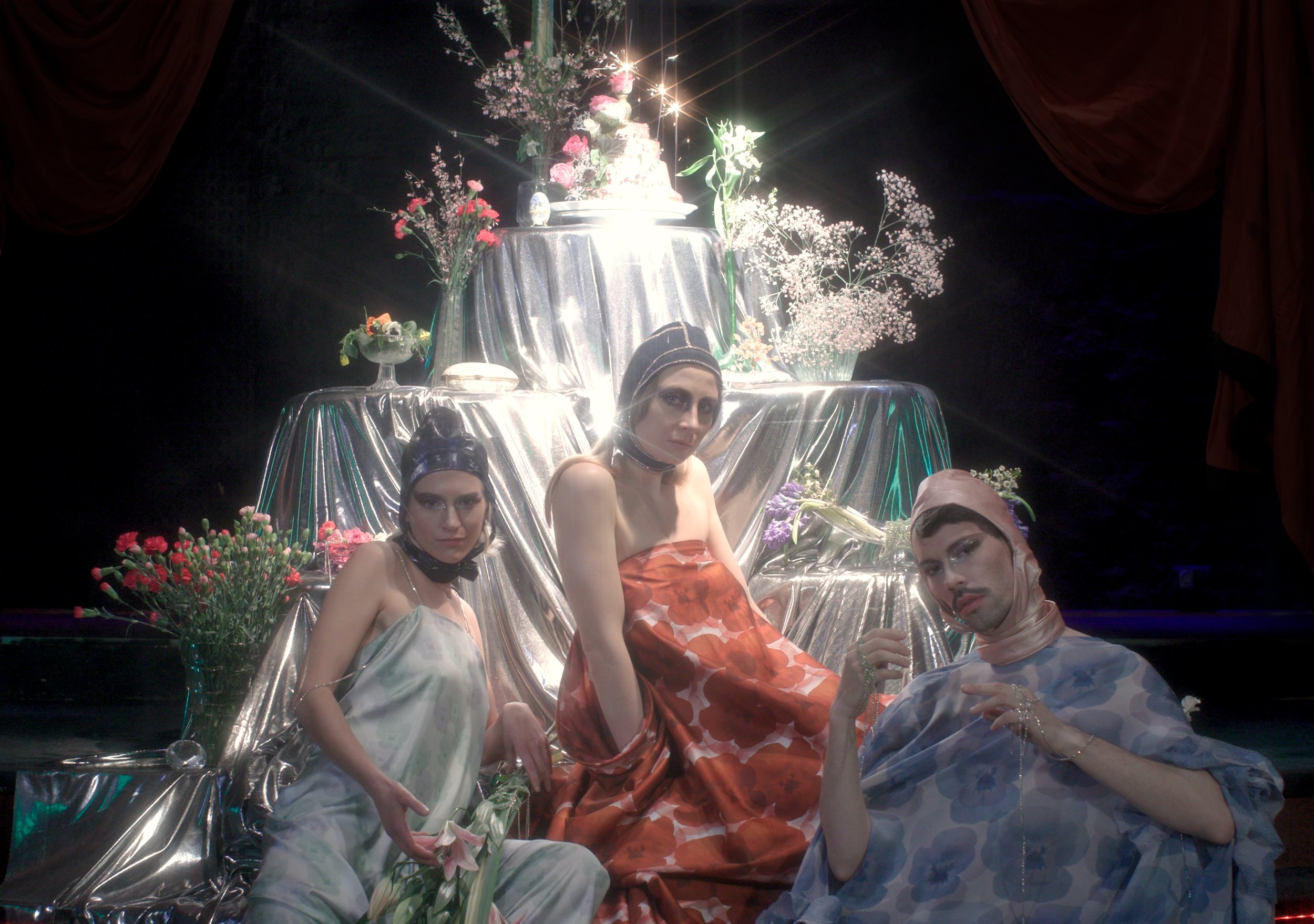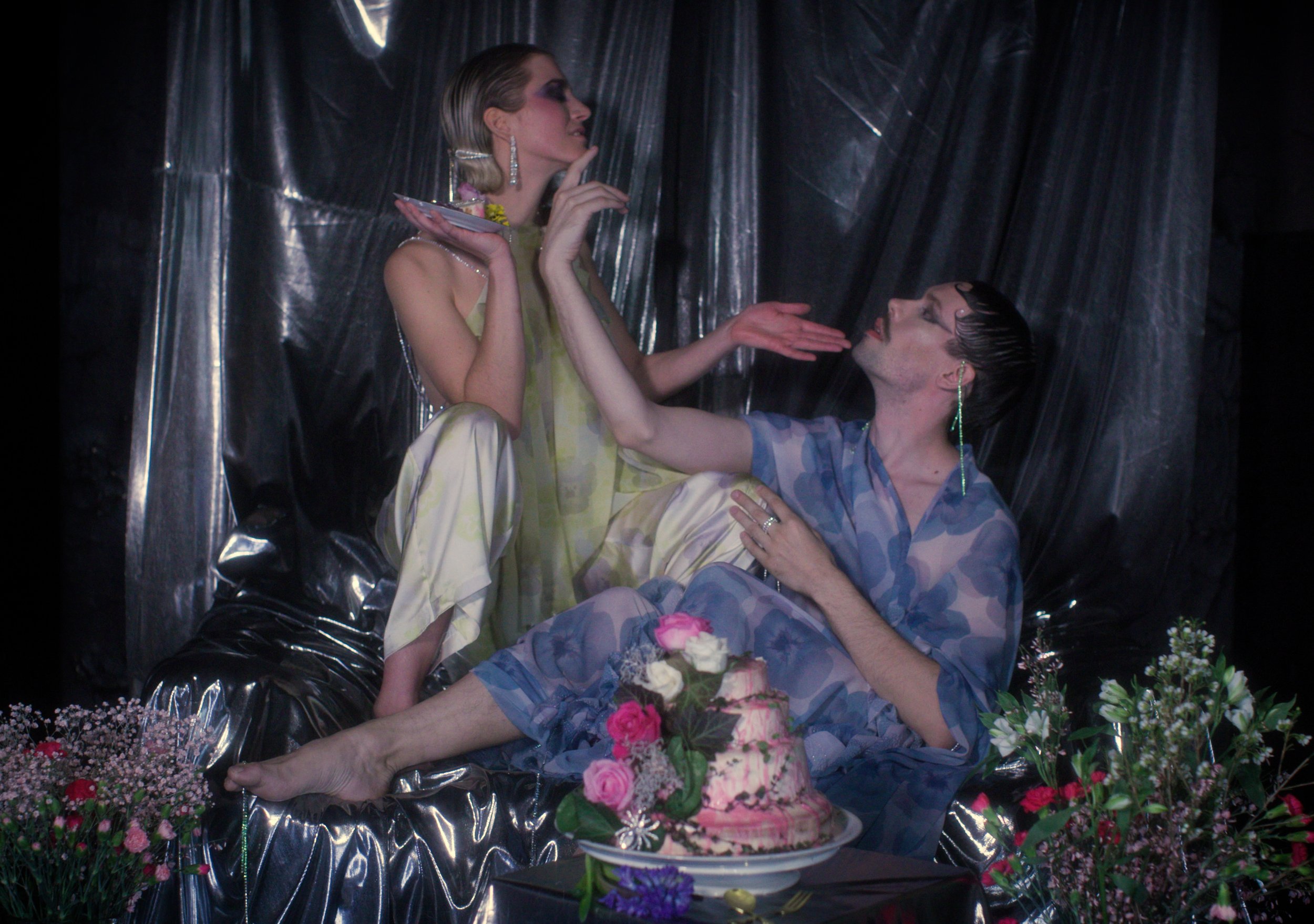Camp: challenge the ordinary
When asking what is “normal”, answering it with “camp” surely does not come to mind. Those two could not be any more different from each other – at least not for the majority of people.
To most people, the word “camp” does not even ring a bell. The word is simply unfamiliar, unheard of and evokes not a single association besides literally “camping”, which – I can tell you right now – has nothing to do with it. But you might be surprised where camp has already entered your life without you noticing. Camp embodies the extraordinary, the over-the-top, the artificial, the outstanding, the endless imagination: anything but “normal”.
Filmstill from Feeling Pansy (Master collection by Philipp Fritsche, filmography by Johanna Frahm & Susann Weißhaar, 2021)
*Queer: Originally, "queer" was simply just another word for strange, unusual, weird or simply: not normal. The word "queer" began denoting someone who is for example gay, lesbian, transgender or bisexual. Recently, it has been reclaimed and adopted by many people in the LGBTQIA+ community as an acceptable umbrella term for everyone who challenges cis-gender heteronormativity.
Let them eat camp
Deeply embedded into queer* culture for more than 100 years and partially used for describing the queer identity itself, camp has been around a little longer than that. Still, to this day, we are able to dwell and drown in the blissful artistry of camps’ birthplace: The Palace of Versailles. Barely any building in the world can meet the divine absurdity and outrageous luxury of Louis XIVs’ masterpiece. While stepping in front of the palace, you yourself have already crossed the line that divides the everyday normal from the upper class “normal”. The golden fencing and its glorious gate mark the very barrier which defined normal in the 18th century. Depending – historically speaking – on what side you found yourself standing, you either begged for bread and were confronted with the ordinary obstacle of a not so enjoyable human life - surviving - or you floated on marbled tiles while gazing into an infinity of reflections of yourself surrounded by brocade and glass chandeliers.
In its origin, camp did not have a political connotation. It did not have to, because the French royals were the ones in power – at least until they got beheaded for their plain ignorance. After losing their influence, the term “camp” vanished for over a century and celebrated its roaring comeback in the golden twenties in Europe – but this time with a twist. It is not exclusively the fortunate anymore who thrive under the captivating spell of camp, but furthermore the queer community. Since camp takes comfort in being outside the box, it might not be surprising that challenging heteronormative gender-roles, traditions and questioning gender as a concept itself has become part of the camp experience. Transforming the traditionalistic civil balls* into the famously known drag balls – which survived and thrive to this day – or hosting lavish gay parties during the prohibition, put the queer subculture in the spotlight of the electrifying night life of the 1920s. The people of the queer community were the first to actively use the word camp to identify it as an aesthetic phenomena, but most importantly to self identify themselves with the core elements of camp. Setting themselves actively apart from the dominant-heteronormative society, creating an alternative reality where they could playfully bend the social conception of normal aka the adequate behaviour in terms of looks (fashion, make up, wigs) and mannerisms (gestures, masquerade, dance). Newspapers and radio reported openly about it and at its peak drag queens were featured in big Hollywood productions and graced the movie screens with undeniable glamour.
*Civil balls: Civil balls are the classic traditionalist balls of the White upper class in North America and Europe. This tradition has been transformed by queer people into drag balls in the beginning of the 20th century.
Defamed and erased
Sadly this fairytale came to an end during the world-wide economic collapse at the end of the decade leading to the great depression and later getting swallowed entirely by the horrifying terrors of the second world war. Even though it seemed like the beginning of the end of the intolerance towards queer culture, it was during this time that the prejudices against queer people – as we know them to this day – were forged. Especially Nazi Germany and the United States played a huge part in establishing stereotypical preconceptions and activly trying to remove queer people from the public sphere.
By passing laws that forbid gay people to gather publicly or the representation of queerness in public (Chauncey et al 1994, 354)by brutally capturing and killing queer people in concentration camps and by imprisoning those who survived again because “they belonged in captivity after all” (Hader, R. (o. D.). Die letzten 100 queeren Jahre. Goethe Institut); by spreading the rumours that “once a man assumes the role of homosexual, he often throws off all moral restrains” (Chauncey et al 1994, 359), these regimes established a picture of a group of people that were anything like heteronormative respectively “normal” people but showcased a true threat to society.
After putting queer culture – as we say today – “into the closet”, the dominant society created the ultimate normal, White phantasy: the 1950s family. From today's point of view you can find humorous camp elements in the cartoon-like dress code and hairstyles of the 50’s housewife, her perfectly groomed garden and her miraculous baked goods. Nowadays drag performers sometimes reference that aesthetic and exaggerate it to create an even more outrageous, grotesque and campy image of that era. But, that being said, while living in White American suburbia, you probably could not get any further away from camp.
*Queer pride: On the night of June 28 1969, the police stormed The Stonewall Inn Bar on Christopher Street, Greenwich Village, New York. It was by no means the first case of police harassment against gays, lesbians, drag queens and transsexuals. But it was the first time they fought back so loudly that the general public could no longer ignore them. The uprisings lasted several days and are considered as a turning point in the fight for equality and acceptance. Celebrated every year on Christopher Street Day, also known as Stonewall Day or Gay Pride all over the world.
Emerging from the shadows and lifted by the spirit of disco music, the queer community started to fight back at the end of the 1960s and established a tradition that would be carried on till today (and hopfully beyond): the queer pride*. Besides demonstrating for equal rights, the queer community could truly express themselves only in the colourfully glowing shades of the night – back then discos and bars became their safe spaces (and remain as such today). Like Icarus’ wings melting under the sunlight causing him to freefall into his own death – it was not yet meant to be for queer people to fully walk amongst the “normal” people during daylight. Camp as an asthetic phenonema not only offers a certain way to dress and express, but also ties the values of the queer community to its identity.
Striking a deep wound and everlasting scar into the queer identity, the HIV-pandemic hit the community hard in the early 1980s and was proclaimed and concived by the general public as a queer disease and problem only. As a result queer people were, for example, kicked out of restaurents or were withheld first aid (Roenneke 2017, 141). A viscious cycle of hatred and ignorance started to repeat itself and set the queer community yet again apart from “normal” citizens.
The category is
Against all the odds and mostly hidden from the public eye, the tradition of the drag balls survived all the way back from the 1920s and is now at the core of queer expression and campy performances. A very private, joyful, emotional and painful insight into the rushing world of drag balls is provided in Jennie Livingston's 1990 documentary biopic Paris is Burning. If you truly want to understand camp, this movie is a must see. Here you will witness how putting on make-up, a wig, a sequin dress or just a simple school uniform has the transforming power of making someone feel alive, making them be themselves and ultimately keep them from killing themselves. The community offers shelter, respect, love, and, most importantly, replaces the family many members have lost by getting rejected for who they are.
Over the last 30 years, ever since Paris is Burning has been released, the queer subculture has expierenced a shift from being almost invisible to striking a center stage pose in pop and mainstream culture. While pop icons like Lady Gaga actively built their carier, persona and creative output around queer fans (and those who are allies), the Series RuPauls Drag Race is introducing the art of drag to millions of people all around the world. While the incredibly sucessful artist Lil Nas X is breaking a mature taboo in rap music as the first openly gay man in the buisness, Mj Rodriguez won a Golden Globe as the first transgender woman for her outstanding role as “Blanca” in the series Pose. Because queer rights have been massivley improving over the last three decades, more and more queer people, artists, actors, politicians and activists are now able to shape a society that represents a more authentic reality of itself.
No doubt, there is more to be done to actually truly change society and improve the lives of queer people around the world. Knowing of my privileged queer life as a White, gay man in Germany, I dare to be hopeful, that this new dawning 20s era may even be more roaring and glooming as the one before. Because as long as there is anything slightly oppressive or outdated, there will always be camp challenging that and showing an alternative. In doing so, camp continuously adds another shade to normal: boldly colourful.
Bibliography
Stefanie Roenneke, Camp als Konzept, Ästhetik, Popkultur, Queerness, 2017, Posth Verlag
George Chauncey, Gay New York, Gender, Urban Culture, and the Making of the Gay Male World 1890-1940, 1994, Basic Books (A Member of the Perseus Books Group)
Susan Sontag, Kunst und Antikunst, 24 literarische Analysen, 1982, Fischer Taschenbuch Verlag, S. 322-341
Further readings
Esther Newton, Mother Camp: Female Impersonators in America, 1972, Chicago Press
Judith Butler, Gender Trouble, 1990, Routledge (Verlag)
Diedrich Dieterichsen, Sexbeat, 1985, Verlag Kiepenheuer & Witsch GmbH & Co. KG







